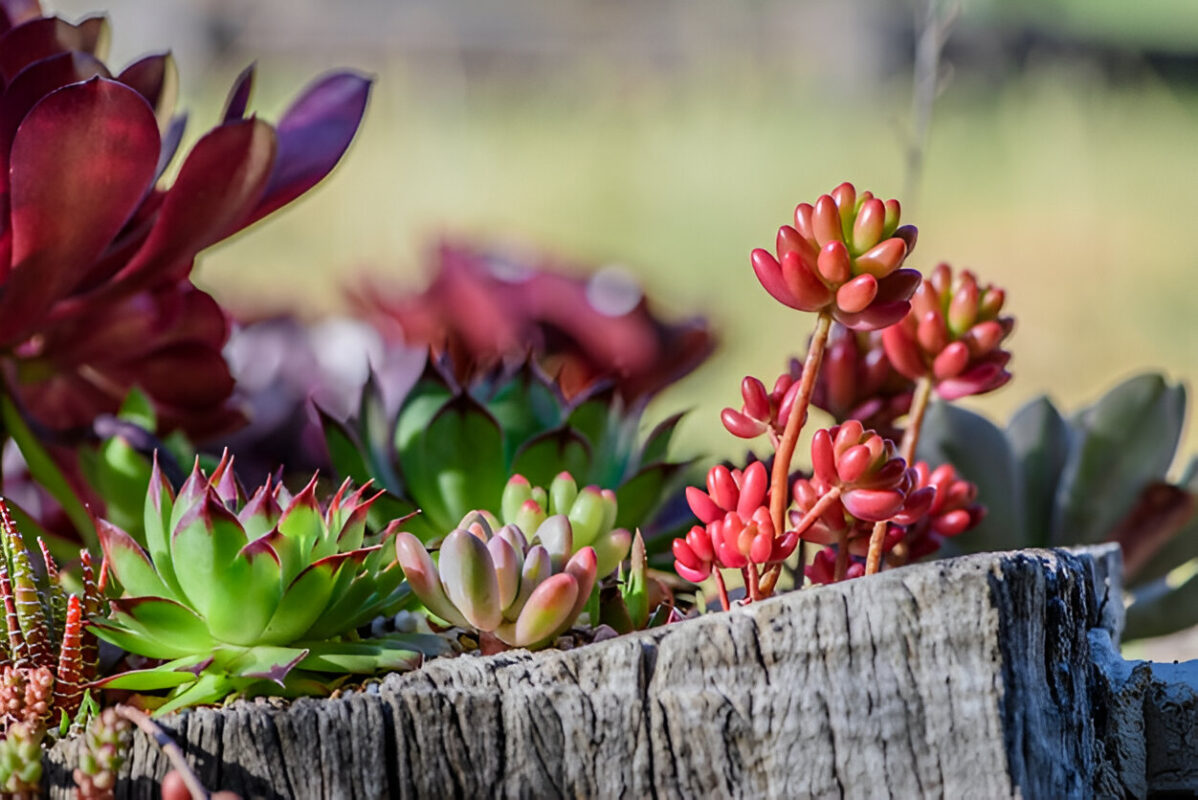Succulent landscaping designs are gaining popularity in places like San Diego for their beauty and resilience in dry climates. These unique plants, including various types of drought-tolerant succulents and cacti, thrive with less water, making them perfect for xeriscaping. But while they’re hardy, succulents are not entirely immune to challenges like rot and disease. Maintaining a healthy succulent garden involves understanding and addressing these potential problems.
Preventing rot and disease ensures that your succulent garden remains vibrant and lush throughout the year. In San Diego, where the weather can fluctuate and sometimes even usher in unexpected rain, it’s important to be prepared. If not addressed properly, these issues can lead to unhealthy plants and diminish your landscape’s appeal. Here’s how to spot and prevent problems before they take hold.
Common Signs of Rot and Disease in Succulents
Succulents, though known for their toughness, have certain vulnerabilities that need attention. Identifying symptoms early can make a big difference in the health of your plants. Here are some common signs that might indicate rot or disease:
– Soft, mushy leaves: This is often a sign of overwatering or poor drainage.
– Black spots or discoloration: Could indicate fungal infections or pests.
– Stunted growth or drooping: May result from poor soil conditions or insufficient light.
– Yellowing leaves: Suggest potential nutrient deficiencies or excess water.
In San Diego, certain diseases and pests target succulents more than others. Watch for signs like the emergence of powdery mildew or an increase in aphid activity. Recognizing these issues early helps you manage them effectively, sometimes avoiding the need to remove affected plants altogether. By observing your plants regularly, you can catch these signs before they develop into bigger problems.
Effective Watering Techniques for Succulents
Watering is crucial in preventing succulent rot. The key is to provide enough moisture without going overboard. Here are some tips to ensure your succulents stay healthy:
– Water deeply but infrequently. Allow the soil to dry out completely between watering sessions.
– Check the weather forecast. Adjust your watering schedule if rain is predicted.
– Use a watering can with a narrow spout to target the roots directly and avoid wetting the leaves.
– During cooler months, reduce watering as succulents need less moisture when not actively growing.
Adapting your watering practices to the San Diego climate helps keep succulents healthy. Spring through fall usually sees your succulents needing more water, while in winter, they can do with much less. Listening to the needs of your plants and adjusting as necessary keeps them resilient against rot and disease, leading to a thriving garden year-round.
Soil and Drainage Considerations
One of the most common reasons succulents suffer from rot is poor drainage. Ensuring your soil is well-draining is key to maintaining healthy plants. Think of well-draining soil like a sieve, allowing excess water to escape, thereby preventing it from building up around your succulent’s roots.
For the best results, use a soil mix specifically designed for succulents or cacti. These often include components like coarse sand, perlite, or pumice, which improve drainage significantly. You can find these mixes at most garden centers, ready to use or as components to create your own perfect blend. Ensuring that your pots have drainage holes is also fundamental because this assists in preventing water from accumulating at the bottom and harming the roots.
Here are a few simple tips to optimize drainage:
– Place a layer of small stones at the bottom of the pots to enhance drainage.
– Elevate pots slightly from the bottom of any decorative containers.
– Choose wider, shallower pots for trailing succulents, as they allow for better airflow.
These considerations not only help prevent rot but also support root health, allowing your garden to flourish with minimal effort.
Selecting Disease-Resistant Succulent Varieties
Choosing the right varieties of succulents can dramatically reduce the risk of disease in your garden. Some species are naturally more resilient to pests and diseases. When planning your landscaping, look for varieties known for their resistance to rot and disease. Aloe, Haworthia, and Echeveria are a few examples that perform well in San Diego’s climate and can withstand occasional downpours without succumbing to rot.
Native plants have already adapted to the local climate and often require less intervention to remain healthy. They are evolutionary experts at dealing with the local conditions, offering a beautiful and low-maintenance addition to your garden. Selecting these types is a smart strategy to ensure that your landscape can resist disease and thrive with minimal fuss.
Routine Maintenance and Professional Help
Taking care of your succulent garden doesn’t end at selection and setup. Routine maintenance is important to keep everything looking its best. Regularly inspect your plants for early signs of trouble and address them promptly. This involves cleaning off dead leaves that can promote mold, keeping an eye out for pests, and trimming back any parts of the plant that don’t look healthy. By keeping a consistent routine, you can ensure that your succulents remain happy and healthy.
Sometimes, the expertise of a professional can make all the difference. Professionals offer the know-how to manage unique challenges, ensuring your garden looks beautiful throughout the seasons. With professional assistance, you can avoid the guesswork and enjoy the confidence that comes with knowing your succulents are cared for by experienced experts.
Keep Your Succulent Garden Healthy and Beautiful
By selecting the right plants, using appropriate soil, and following smart watering techniques, your succulent landscape can thrive and stay stunning for years. Regular maintenance and professional input ensure your efforts aren’t in vain, protecting your garden from unnecessary stressors.
Whether you’re a seasoned gardener or just starting, ensuring your plants are resilient to common issues elevates your landscape’s overall appeal. Taking these steps allows you to enjoy a beautiful, worry-free succulent garden that’s perfectly suited for the San Diego climate.
Ensure your succulent garden thrives with ease and minimal stress by choosing the right landscaping solutions. For professional insight into maintaining resilient succulent landscaping designs, visit Garden Rhythms to discover how our services can enhance your outdoor space in San Diego.

